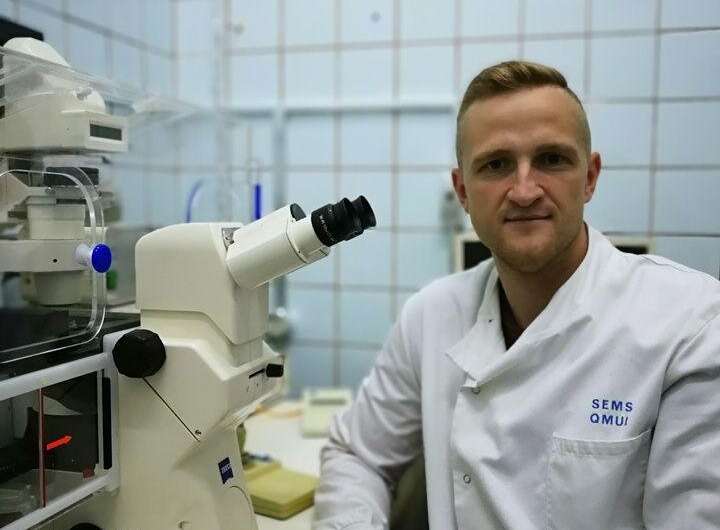

| Date | 26th, Jun 2019 |
|---|
 Anton Popov. Credit: AKSON Russian Science Communication Association
Anton Popov. Credit: AKSON Russian Science Communication Association
Russian scientists found that nanocrystal tungsten trioxide can be used instead of barium for X-ray examinations and also in cancer treatment. The results of the study are published in Journal of Nanomaterials.
Due to the physical-chemical properties of tungsten, in particular, the effective absorptive capacity of X-rays, its compounds are considered as a possible basis for creating a new class of contrast agents. This method can be used in computer tomography. Computer tomography (CT) is a method of visualizing the internal organs. The method is based on one-dimensional or two-dimensional projections obtained by passing of X-rays through tissues, when an X-ray source and a detector opposite to it simultaneously rotate around an object.
To obtain high-quality images, it is essential to have a visually distinct difference in the attenuation of X-rays between the organs. To differentiate organ, normal and pathological structures better, various contrast enhancement techniques are used. Usually this is done with the use of radiopaque agents that are injected in the form of solution. The greatest effect of attenuation of radiation is achieved with the use of chemical elements with a large mass of atoms. When choosing such agents, it is necessary to take into account five criteria for their clinical use in CT: effective radiopacity, selective distribution, lack of pharmacological and/or toxicological effects, in vitro and in vivo stability, and cost and availability.
Today, only iodine and barium are used in radiography. However, in order to obtain a contrast X-ray image of the organ, one needs to take a relatively large amount of agent solution, which can cause discomfort and side effects.
Scientists from Kurnakov Institute of General and Inorganic Chemistry and the Institute of Theoretical and Experimental Biophysics RAS found that tungsten can be used instead of iodine and barium. They showed the biosafety of tungsten nanoparticles for human cells even in high concentrations, and also developed a scheme for the synthesis of highly crystallized tungsten trioxide nanoparticles, which can form the basis for creating a new radiopaque agent.
"Previously, we synthesized and investigated photochromic tungsten oxide nanoparticles, which have pronounced bactericidal activity against gram-positive and gram-negative bacteria, as well as selective photocatalytic activity against cancer cells, which can be used in perspective for photodynamic therapy of cancer. Our team works in two directions: development of a radiopaque agent and creation of a new class of photosensitizers for photodynamic cancer therapy," comments one of the authors of the study, Anton Popov.
More information: B. Han et al, Highly Crystalline WO3 Nanoparticles Are Nontoxic to Stem Cells and Cancer Cells, Journal of Nanomaterials (2019). DOI: 10.1155/2019/5384132
Provided by AKSON Russian Science Communication Association
Citation: Scientists patent new agent for X-ray (2019, June 26) retrieved 5 July 2022 from https://phys.org/news/2019-06-scientists-patent-agent-x-ray.html
This document is subject to copyright. Apart from any fair dealing for the purpose of private study or research, no part may be reproduced without the written permission. The content is provided for information purposes only.
